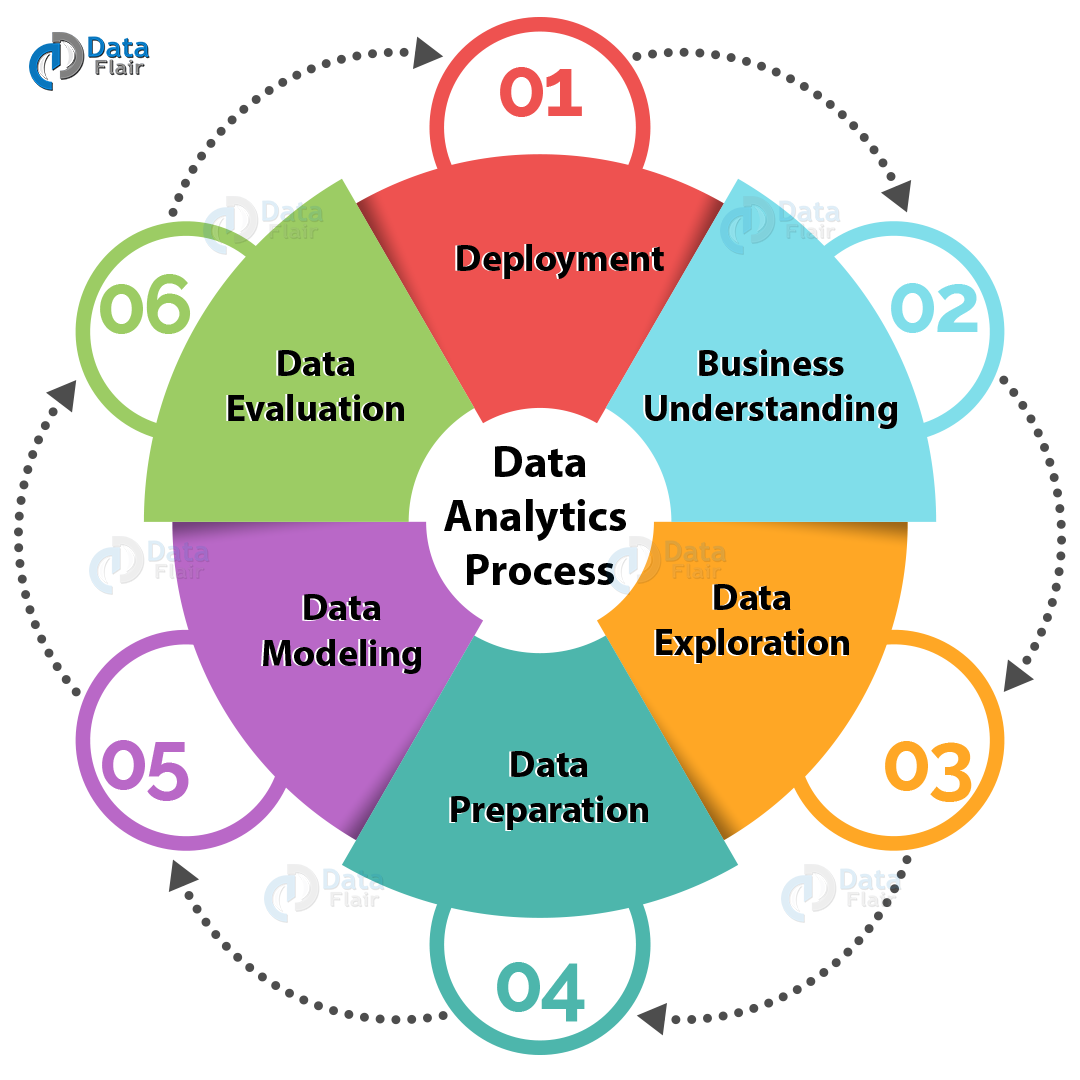Introduction To Big Data Analytics in Recruitment
When it comes to Big Data Analytics in Recruitment, it all boils down to the three Vs- Volume, Velocity, and Variety. However, using traditional methods, you can only optimize these three to a certain level. Beyond it, you will need the secret spice- data. Let me explain how for all three factors-
Image Source: Medium
-
Big Data Analytics in Recruitment – Volume:
The Scale Challenge: The sheer number of applicants for popular roles, especially through online channels, is staggering. Human recruiters are physically incapable of thoroughly reviewing thousands of resumes. Sifting becomes superficial, relying on keyword matching or basic filters, increasing the risk of missing highly qualified but non-traditional candidates.
Big Data’s Solution – Deep Processing: Big Data systems don’t just store vast applicant pools; they process them deeply and simultaneously. This goes beyond simple resume parsing:
* Automated Resume/CV Analysis: Natural Language Processing (NLP) extracts skills, experiences, education, certifications, achievements, and even inferred soft skills with increasing sophistication, creating structured profiles.
Digital Footprint Aggregation: Systems can legally and ethically scan professional networks (LinkedIn, GitHub, Behance, research portals), publications, conference participation, open-source contributions, and even verified skill assessment platforms (like Codility, HackerRank) to build a 360-degree view far richer than a static resume.
Internal Talent Rediscovery: Analyzing internal HRIS data (performance reviews, project histories, skills databases, learning management system completions) identifies high-potential internal candidates for new roles, significantly reducing time-to-hire and boosting retention.
Talent Pool Management: Continuously analyzing and categorizing past applicants, silver medalists, and sourced profiles creates dynamic, searchable talent pools for future needs, drastically reducing sourcing time.
Impact: This volume handling enables true meritocracy at scale, ensuring every applicant has a chance to be evaluated based on a comprehensive data profile, not just whose resume catches a recruiter’s eye in the first 10 seconds. -
Big Data Analytics in Recruitment – Velocity:
The Cost of Delay: As mentioned, lengthy hiring processes lead to candidate drop-off (ghosting), lost productivity, increased cost-per-hire, and competitive disadvantage. Top talent, especially in high-demand fields, often has multiple offers within days.
Big Data’s Solution – Real-Time Automation & Insight:
Automated Sourcing & Screening: AI-powered tools can continuously scan databases, job boards, and social profiles for passive and active candidates matching specific criteria, instantly notifying recruiters. Initial screening (knock-out questions, basic skill matching) happens in real-time.
Predictive Candidate Matching: Algorithms compare candidate profiles (from resumes, assessments, profiles) against job requirements and historical success data of similar hires, instantly surfacing the best fits. This moves beyond keyword matching to semantic understanding and contextual relevance.
Interview Scheduling & Logistics: AI schedulers eliminate the endless email chains, finding mutual availability instantly and integrating with calendar systems. Chatbots can handle initial candidate queries and status updates 24/7.
Faster Decision Making: Analytics dashboards provide recruiters and hiring managers with consolidated, real-time data on candidate pipelines, assessment scores, interview feedback trends, and comparative analytics, enabling quicker, data-informed hiring decisions.
Reduced Time-to-Offer: By automating administrative tasks and providing faster insights, the entire process from application to offer is compressed. Speed becomes a competitive advantage in securing top talent.
Impact: Velocity isn’t just about speed; it’s about efficiency and reducing friction. Candidates experience a smoother, more responsive process, while organizations fill critical roles faster, minimizing operational disruptions. -
Big Data Analytics in Recruitment – Variety: Unveiling the Holistic Candidate
Beyond the Resume: Traditional methods rely heavily on the curated narrative of a resume and the snapshot of an interview. This misses vast amounts of relevant data.
Big Data’s Solution – Multi-Dimensional Profiling:
Structured + Unstructured Data Fusion: Combines traditional structured data (degrees, years of experience, skills lists) with unstructured data (resume narratives, cover letters, interview transcripts, work samples, GitHub code, portfolio comments, social media sentiment analysis – where ethical and legal).
Skills Inference & Validation: Goes beyond stated skills. Analyzes project descriptions, code repositories, writing samples, or even participation in specific online communities to infer and validate actual skill levels and applications.
Cultural Fit Prediction: Analyzes language patterns in written materials, video interviews (tone, word choice), and potentially public online presence (with strict ethical boundaries) to assess alignment with company values and team dynamics, using models trained on successful current employees.
Potential & Learning Agility: Identifies indicators of potential beyond current experience, such as rapid skill acquisition (evidenced in learning platforms), tackling complex projects, diverse experiences, or specific cognitive assessment results.
Mitigating Unconscious Bias (When Designed Right): By focusing on objective data points (validated skills, performance in simulations, work samples) rather than names, schools, or pedigree alone, data-driven approaches can help surface diverse talent – like candidates with non-linear career paths, gaps (for valid reasons like caregiving or education), or from non-traditional backgrounds. (Crucially, this requires vigilant design to avoid baking in existing biases).
Impact: Variety allows for a far richer, more predictive assessment of a candidate’s true capabilities, potential, and fit, leading to better quality of hire and more diverse, resilient workforces. -
The Fourth V: Veracity – Ensuring Data Quality and Trustworthiness
The Garbage In, Garbage Out Problem: Big Data’s power is nullified if the underlying data is inaccurate, incomplete, outdated, or biased.
Critical Challenges in Recruitment Data:
Resume Inflation: Candidates may exaggerate skills or experiences.
Inconsistent Data Formats: Resumes, application forms, and assessment results come in wildly different structures.
Outdated Profiles: Online profiles may not be current.
Inherent Biases: Historical hiring data used to train algorithms often reflects past human biases (gender, race, age, educational bias).
Data Silos: Critical candidate data trapped in separate systems (ATS, HRIS, assessment platforms, email).
Big Data’s Role in Addressing Veracity:
Data Cleansing & Standardization: Tools to parse, normalize, and deduplicate data from various sources into a consistent format.
Validation Techniques: Cross-referencing data points (e.g., verifying employment history, checking code repositories for claimed projects, using skill validation assessments).
Bias Detection & Mitigation: Actively auditing algorithms and data sets for bias using statistical methods and diverse testing panels. Implementing fairness constraints in models. Using techniques like “blinding” (removing protected characteristics during initial screening).
Data Governance: Establishing clear policies for data collection, storage, usage, and retention, ensuring compliance with regulations like GDPR and CCPA.
Impact: Focusing on Veracity is non-negotiable for ethical, legal, and effective Big Data Analytics in recruitment. It builds trust in the system and ensures decisions are based on reliable information.
-
The Fifth V: Value – Demonstrating Tangible Business Impact
Beyond Efficiency: The Strategic Imperative: The ultimate goal isn’t just faster or cheaper hiring; it’s better hiring that drives business outcomes.
Key Value Propositions of Big Data Analytics in Recruitment:
Improved Quality of Hire (QoH): The holy grail. By identifying candidates with the right skills, potential, and fit, Big Data analytics leads to hires who perform better, stay longer, and contribute more to business goals (measured by performance reviews, productivity metrics, retention rates, and manager satisfaction). This is the single most significant ROI driver.
Reduced Time-to-Hire (TtH) & Cost-per-Hire (CpH): Automation and faster decision-making directly compress hiring cycles and reduce associated costs (agency fees, advertising, recruiter time).
Enhanced Candidate Experience: Faster communication, personalized interactions (where appropriate), transparency, and efficient processes improve the employer brand and increase offer acceptance rates.
Data-Driven Workforce Planning: Analyzing hiring trends, skill gaps in the current workforce, and market availability predicts future talent needs more accurately, enabling proactive sourcing and development strategies.
Increased Diversity & Inclusion: By reducing reliance on gut feel and network-based hiring, and focusing on objective skills/potential indicators (when bias is mitigated), data-driven approaches can significantly broaden the talent pool and identify high-potential candidates from underrepresented groups.
Reduced Turnover: Better matching candidates to roles and company culture leads to higher job satisfaction and longer tenure.
Competitive Advantage: Accessing talent faster and smarter than competitors becomes a key strategic differentiator.
Impact: Value transforms recruitment from a cost center to a strategic talent acquisition function, directly impacting the bottom line through better talent.
Big Data Analytics in Recruitment – Advantages
-
Hiring processes are fine-tuned:
Recruitment agencies can access data related to demographics, compensation, social media, and more to find newer attributes about candidates. This information helps the agencies in separating unique candidates who would match the company’s work culture. Both data from existing employees as well as applicants can be used to find similar candidates, as well as those who would be able to bring something new to the table.
-
Usage of historical data in hiring:
Recruitment portals have started to use historical data in their recruitment efforts. The massive data repository from past hiring is then used to find trends in the data, to improve hiring and increase efficiency. For example, if a certain category of candidates is found to leave a company soon after joining then such candidates would be filtered using historical data. Historical data also used to decide on remuneration and other benefits to attract potential candidates.
-
Improve the hiring experience:
The current hiring experience is a slow one and often, candidates drop off when it takes too long. A bad hiring experience spoils the name of a company and candidates are less likely to apply to the same company again. Recruitment portals can help companies by improving the experience, making the recruitment cycle smaller, giving quick feedback and bringing more humanity in the process. When a candidate gets feedback after each step in the process and view his chances of getting to the next stage compared to the other applicants, he is more likely to stay on. Such a transparent recruitment procedure would be impossible to implement if not for Big Data Analytics in Recruitment.
-
Building in a diversity tracker into the recruiting method:
Companies have certain diversity targets that they need to maintain in their hiring numbers. When recruiting using traditional methods, making sure that these numbers sustained, is difficult. However, when using big data analytics, you can do your shortlisting itself based on your diversity targets. Recruitment portals use these techniques to help companies reach their diversity goals better. Instead of using estimates, analytics help in continuous monitoring of the hiring funnel to keep a track of demographic ratios such as ethnicity, gender, background, and more.
-
Delivering on recruiting capability:
When a company overhires, it ends up having too many individuals on the bench, and an unnecessary cost burden. At the same time, under-hiring can cause a fall in productivity. And if attrition causes an even greater lack of resources. Then the company will be in serious trouble. Recruitment portals help companies by keeping track of their attrition rates. Their hiring numbers, internal hirings, movement of employees between departments. Positions that can open up soon, and more using big data analytics. This way they help companies hire as many candidates that they would need, without affecting costs or productivity. On top of this, recruitment agencies also keep track of the annual budgets of companies. They can fill up their vacancies and not overshoot their funds either.
-
Identifying Hiring Obstacles:
Using big data not only helps in the recruitment process and in predicting future hiring. This needs but also in keeping a track of potential blockers that may present themselves in the hiring pipeline. The data also helps recruitment portals understand which step in the process most candidates drop off, and why they do so.
Big Data Analytics in Recruitment – The Future
Big Data Analytics in Recruitment is a tool for recruitment agency and firm, but their effectiveness depends on the ability of the user. While there’s no guaranteed success, there are multiple success stories. For example- there might be a person, with exceptional skills and abilities who have skipped college been hired by a company with a big name. But by analyzing public data, a recruitment portal can find such candidates and help companies fill up positions that are lying vacant due to lack of experienced candidates. While such candidates do not look good on paper passed on by traditional recruiters. When using big data analytics, only the data points analyzed without the human bias that usually creeps in.
Conclusion:
In case you are setting up a recruitment portal, or you are running one that requires a live data feed of jobs from all over the globe, our automated job discovery solution- JobsPikr can provide you with the data, along with the ability to use features like keyword search and filtering. Using this data feed, you can generate insights that can help candidates get a job must faster and also provide them with a regularly updated job feed. This would not only bring in more candidates but also would set you apart in the crowd and result in higher conversions.





